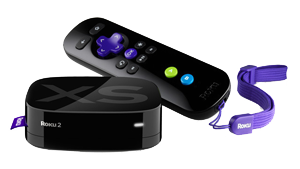Roksbox Advanced Features
Using Existing Media Files Without Moving Them
If you already have your media files located somewhere, you probably don't want to move them to make them work with Roksbox. Fortunately, you don't have to.
You can access you media files by using aliases. An alias is created as part of your web server, and acts like a pointer to your files. Here is an example of an alias:
Alias name: Videos
Alias assignment: F:\My Files\Videos
In this case, the alias Videos points to F:\My Files\Videos. You would access your videos with the URL http://your-web-server-address/Videos. ex. http://192.168.1.100/Videos.
For Roksbox to be able to find your files, the alias name needs to match the folder name where your files are located as in the example above. As another example, if your video files are located at F:\Media\My Videos, then you would need to create an alias called My Videos, and "point" it to F:\Media\My Videos.
Important: The video alias name needs to be the same name as the video folder name.
You can create the same kind of aliases for your music files and your photo files.
Creating Aliases in Mongoose
To create aliases in Mongoose, click the Start button -> All Programs -> Mongoose web server -> Edit config.
Find the line that says "# aliases /my_d_disk=d:\,/my_e_disk=e:\". This is an example of how to create aliases. The pound sign (#) at the beginning means that it is a comment line, and currently isn't being used.
You should be able to create an alias for any drive physically attached to your computer. It won't work with mapped drives though.
The easiest way to create new aliases is to start a new line and enter the alias information. You can start the new line anywhere, but you might want to start it below the existing alias line. Using the example above for the Videos alias, your alias line would look like this.
aliases /Videos=F:\My Files\Videos
If you also wanted to create aliases for your music and photo files, it would look something like this:
aliases /Videos=F:\My Files\Videos,/Music=F:\My Files\Music,/Photos=F:\My Files\Photos
Notice that each alias definition is seperated by a comma.
After you get your aliases set up, save and exit the file. Then either shut down and restart Mongoose from Start -> All Programs -> Mongoose web server -> Stop service, and Start -> All Programs -> Mongoose web server -> Start service, or just reboot your computer. If you are using Windows Vista or Windows 7, you might need to right click on the Stop service and Start service parts and choose Run as administrator.
To see if your aliases work, open a web browser and go to http://your-web-server-address/Videos. If it is working correctly, you will see a directory of your videos folder. Try your other aliases if you have other ones set up. If it doesn't work, make sure your paths are correct in your aliases definitions, and that everything is spelled correctly.
Using Aliases in Roksbox
After you've created your aliases and tested them, you need to set them up in Roksbox. Open Roksbox and go to Setup. Using the example aliases above, you would make your setup screen look like the following (of course, if you used different names, your names would be here):
Web Server Address: (your web server address)
Web Media Root Folder: (delete)
Video Folder Path: Videos
Music Folder Path: Music
Photo Folder Path: Photos
Since the aliases point directly at the media folders, we aren't using a media root folder, so delete that entry. The other folders should correspond with your alias names. When you're done, exit Setup.

